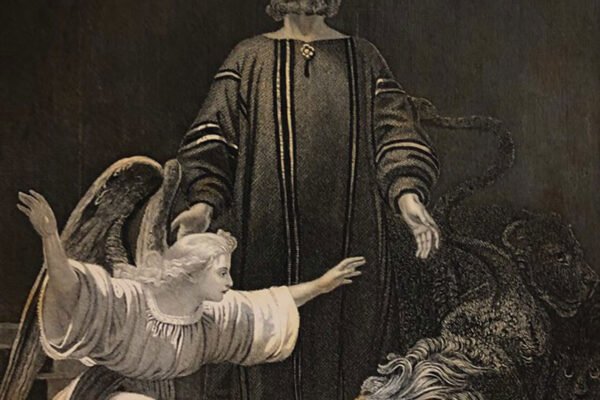Revival has been in the news lately. Stories of college students holding all-night, weeklong services sparked breathless hope for another Great Awakening — a mass move of the Holy Spirit racing like wildfire across the American continent and culture.
But would we know a true revival if we saw it? What hallmarks would we look for? More importantly, how could we usher in a real revival?
Old Testament revivals
Several examples of glorious revival are in Scripture, including thousands expressing a dramatic heart change toward God. One was during King Hezekiah’s reign in Judah. We read this beautiful account in 2 Chronicles:
Then the whole assembly decided to celebrate the feast another seven days, so they celebrated the seven days with joy. . . . So there was great joy in Jerusalem, because there was nothing like this in Jerusalem since the days of Solomon the son of David, king of Israel (30:23, 26).
A similar event occurred during Josiah’s reign:
There had not been celebrated a Passover like it in Israel since the days of Samuel the prophet; nor had any of the kings of Israel celebrated such a Passover as Josiah did with the priests, the Levites, all Judah and Israel who were present, and the inhabitants of Jerusalem (35:18).
Yet another revival took place in the time of Nehemiah:
The entire assembly of those who had returned from the captivity made booths and lived in them. The sons of Israel had indeed not done so from the days of Joshua the son of Nun to that day. And there was great rejoicing (Nehemiah 8:17).
Each example highlighted was preceded by long periods of flagrant sin against God and man; periods of idolatry, sexual immorality, and violent oppression of the innocent. What turned a culture of sin into a community joyfully worshipping God? The answer is in Josiah’s trend-setting response to seeing who he was in the light God’s law: He tore his clothes (2 Chronicles 34:19).
Tearing clothes might seem odd to us, but it expressed the same conviction the people felt in Nehemiah’s day that led them to weep and mourn when they heard the words of the law (Nehemiah 8:9).
Repentance
The first work of the Holy Spirit in bringing revival is to enable God’s people to see their true condition in light of God’s holy standards. Revival starts with repentance, but we find repentance about as appealing as the shock of a defibrillator. Yet without repentance, waning faith will die.
The first step of repentance is to confess the specific ways in which we have personally missed the mark of God’s holiness. This confession allowed a holy God to move among sinful people to bring healing, joy, and new life.
Consider John the Baptist’s ministry. His purpose was to prepare the way for the greatest work and move of God the world has ever seen. What was his message and method? Mark 1:4 says, “John the Baptist appeared in the wilderness preaching a baptism of repentance for the forgiveness of sins.” While he baptized with water, John described the greater work of God to come: “He will baptize you with the Holy Spirit” (v. 8).
On the day of Pentecost, when it came time for God to fulfill the promise to baptize with the Holy Spirit, Peter said to the thousands assembled: “Repent, and each of you be baptized in the name of Jesus Christ for the forgiveness of your sins; and you will receive the gift of the Holy Spirit” (Acts 2:38).
We pray for revival, but are we willing to follow the biblical template for preparing the way for a fresh baptism of the Holy Spirit? Are we willing to review God’s law, to examine our own hearts in the light of God’s holiness, to confess our sin to God and others?
Revival begins with each one of us asking the Holy Spirit to show us our hearts as God sees them. I must look into the mirror of God’s perfection and confess who I really am. I must repent.
To repent is not just to weep over our sin, nor just to admit it. To repent is to allow God to remove that sin and then determine to forsake it. When Hezekiah and Josiah ushered in revival, they put away idols. Ezra and Nehemiah put away foreign wives. John the Baptist instructed the people to put away greed. Repentance is all about turning our heart away from the love of the world and toward the love of God.
Spreading revival
How will we recognize a true revival? It will certainly involve a work of conviction by the Holy Spirit drawing attention to individual sin. How will we know it’s for real? Not necessarily by healings and manifestations of the gifts of the Spirit, but by heartfelt contrition and confession. Confirmation will be transformed hearts expressing a new first love in worship, service, and righteousness.
How can we be a part of preparing the way for a new work of the Holy Spirit in our day? Maybe instead of praying for revival we should pray for a spirit of conviction. Maybe instead of praying for the revival of our nation, we could pray for revival to begin with us, trusting that our spark of conviction, confession, and repentance can pass to others and spread like wildfire across our nation.
In doing this, we can enter afresh into the kingdom of God by responding to Jesus’ invitation: “The time is fulfilled, and the kingdom of God is at hand; repent and believe in the gospel” (Mark 1:15).








